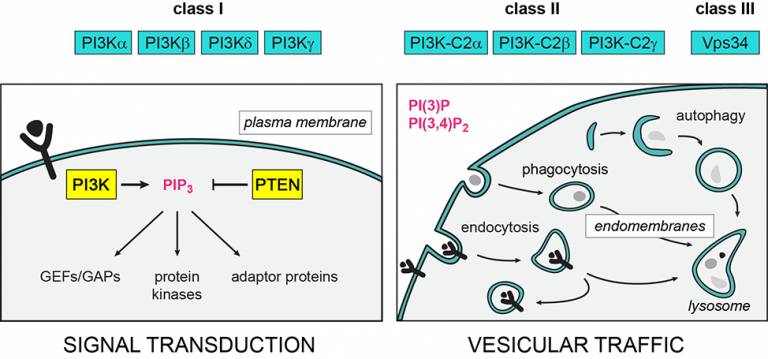Signal transduction is the process by which information from a cell’s exterior is transmitted to the inside of the cell. This can be achieved by activation of receptors located at the cell surface. These receptors then stimulate signalling molecules inside the cell to generate ‘second messengers’ that ultimately regulate cell responses (A).
PI3Ks are signalling molecules that, upon recruitment to receptors, modify (phosphorylate) lipids and convert these to ‘second messengers’ (B).
The activity of PI3Ks can be blocked by pharmacological agents or by genetic inactivation (C).

Mammals have eight PI3K family members (also known as isoforms), which are divided into three classes. All PI3K isoforms phosphorylate the 3’ position of the inositol ring in membrane phospholipids. However, the different PI3K family members often have specialised functions, to differ in the type of lipid they modify and the way that they are expressed and regulated.
The class I PI3Ks act at the plasma membrane upon binding to receptors. Of these, PI3Kalpha (encoded by the PIK3CA gene) is widely expressed and commonly mutated in cancer. PI3Kdelta and PI3Kgamma, which are mainly present in blood cells, are important in immunity and inflammation. PI3Kbeta is also broadly expressed but its function remains more elusive.
Class II and III PI3Ks are important in intracellular membrane trafficking processes, such as endocytosis and autophagy.

 Close
Close


